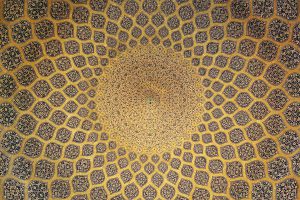“Shaykhunā al-Sharīf ʿImād al-Dīn” in Ibn al-Rifʿah’s Kifāyah

بسم الله الرحمن الرحيم
Ibn al-Mulaqqin and Ibn Qāḍī Shuhbah mentioned that Ibn al-Rifʿah cited from his teacher, al-Sharīf ʿImād al-Dīn al-ʿAbbāsī, in Kifāyat al-Nabīh at the end of Bāb al-Rahn.[1] We located two additional instances of Ibn al-Rifʿah relating from him. The first is in Bāb al-Waqf[2] and the other is in Bāb al-Sharṭ fī al-Ṭalāq.[3] In both these places, Ibn al-Rifʿah said: “Qāla Shaykhunā al-Sharīf ʿImād al-Dīn.” Thus, there are at least three instances in which Ibn al-Rifʿah related from al-Sharīf ʿImād al-Dīn in Kifāyat al-Nabīh.
Ibn Qāḍī Shuhbah mentioned that al-Sharīf ʿImād al-Dīn al-ʿAbbāsī taught at Cairo’s al-Madrasah al-Nāṣirīyah, which was located in the vicinity of the ʿAmr b. al-ʿĀṣ Mosque. Ibn Qāḍī said that al-Sharīf ʿImād al-Dīn taught at this madrasah for a long time and received his epithet from his many years of service. Ibn Qāḍī further mentioned that beyond this he was unaware of other biographical details regarding al-Sharīf ʿImād al-Dīn al-ʿAbbāsī.[4] Isnawī mentioned that he taught at al-Madrasah al-Sharīfah.[5] Ibn Qāḍī and Isnawī are saying the same thing as this madrasah went by various names over the years. There was a place in Fustat next to the ʿAmr b. al-ʿĀṣ Mosque that would become al-Madrasah al-Nāṣirīyah.
First, the place was called Dār al-Fulful/Filfil. Usāmat b. Zayd al-Tannūkhī purchased twenty thousand dinārs worth of pepper from Mūsā b. Wardān as a gift for the emperor of Rome. The gift was stored at this location, which was thereafter named after it. Then, it was repurposed and used as a police station for several years. Afterwards, it was converted into a prison called al-Maʿūnah. In AH 566, Ṣalāḥ al-Dīn al-Ayyūbī converted it into a madrasah. This was the first Sunni institute of higher learning to open after the Sunnis took control of Egypt away from the Shiite.[6] This madrasah was named after Ṣalāḥ al-Dīn and called al-Madrasah al-Nāṣirīyah.
The people also referred to it as Madrasat Ibn Zayn al-Tujjār after the first jurist to lecture there, Abū al-ʿAbbās Aḥmad b. al-Muẓaffar (d. 591), who is known as Ibn Zayn al-Tujjār.[7] It was also called al-Madrasah al-Sharīfah.[8]
After opening al-Madrasah al-Nāṣirīyah, Ṣalāḥ al-Dīn opened other institutes in Egypt which he bestowed to Sunni scholarship. These institutes persevered in their service to Islām until the influences of Shiite thought abated. And this has, al-ḥamdu liLlāh, remained until today. The historian and geographer, Muḥammad Ramzī Bey (d. 1945), said that in his time there was nothing but open land in the area where al-Madrasah al-Nāṣirīyah once stood.[9]
Thus, Ibn al-Rifʿah’s teacher, al-Sharīf ʿImād al-Dīn al-ʿAbbāsī, is called “al-Sharīf” because of the many years of service that he gave to al-Madrasah al-Nāṣirīyah/Sharīfah. Moreover, Ibn al-Rifʿah related from him in at least three places in Kifāyat al-Nabīh.
And Allāh knows best.
[1] al-ʿAqd al-Mudhhab fī Ṭabaqāt Ḥamalat al-Madhhab, 211; Ṭabaqāt Ibn Qāḍī Shuhbah, 2:207. Also see: Kifāyat al-Nabīh, 9:467.
[2] Kifāyat al-Nabīh, 12:71.
[3] Ibid., 14:83.
[4] Ṭabaqāt Ibn Qāḍī Shuhbah, 2:207.
[5] Muhimmāt, 5:358.
[6] Mufarrij al-Kurūb fī Akhbār Banī Ayyūb, 1:197.
[7] Ṭabaqāt Ibn al-Subkī, 6:64.
[8] al-Mawāʾiẓ wa al-Iʿtibār bi Dhikr al-Khiṭaṭ wa al-Āthār, 4:200; al-Muqaffā al-Kabīr, 5:320.
[9] al-Nujūm al-Zāhirah, 5:385.


